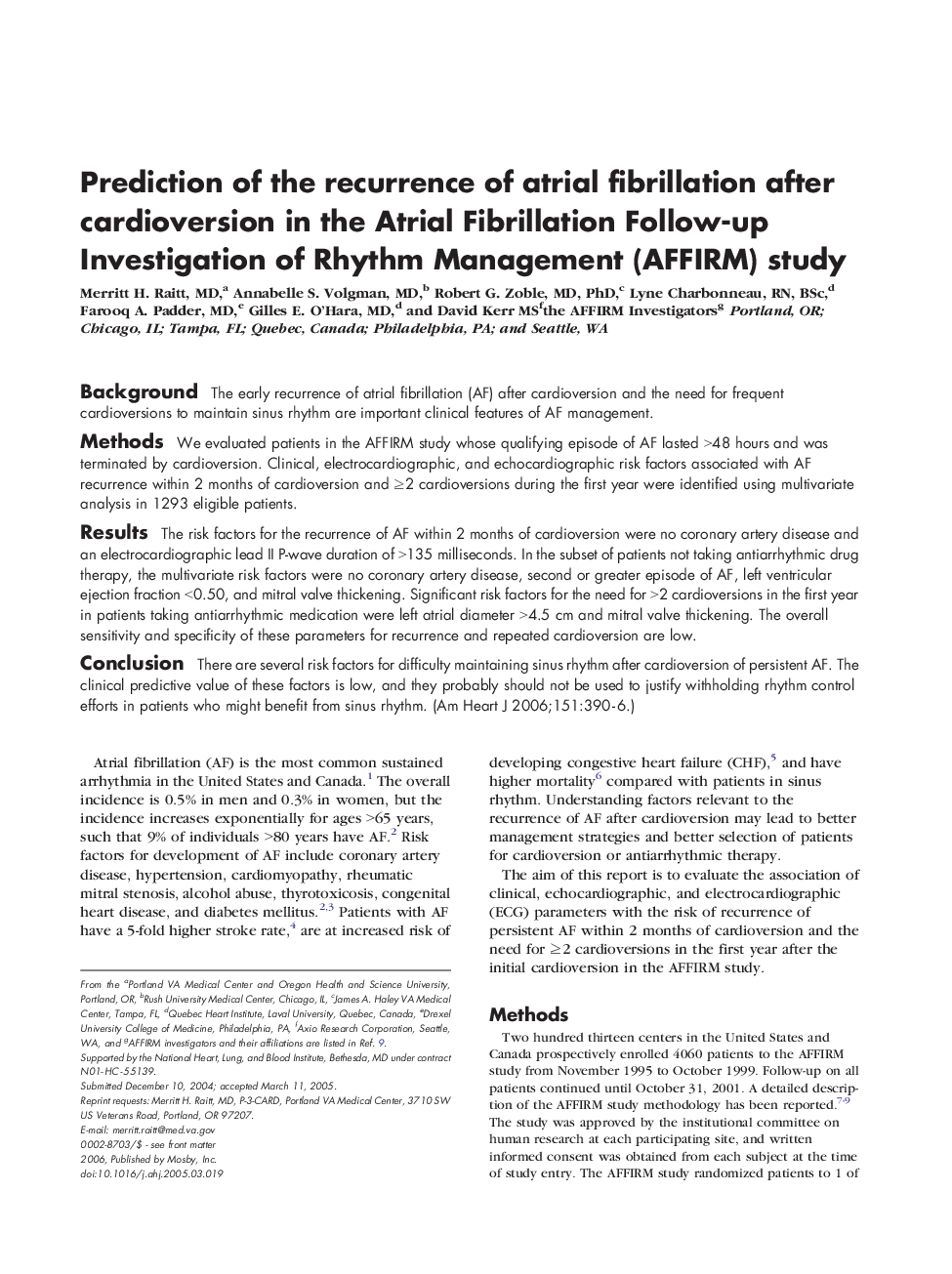| Article ID | Journal | Published Year | Pages | File Type |
|---|---|---|---|---|
| 2852035 | American Heart Journal | 2006 | 7 Pages |
BackgroundThe early recurrence of atrial fibrillation (AF) after cardioversion and the need for frequent cardioversions to maintain sinus rhythm are important clinical features of AF management.MethodsWe evaluated patients in the AFFIRM study whose qualifying episode of AF lasted ≥48 hours and was terminated by cardioversion. Clinical, electrocardiographic, and echocardiographic risk factors associated with AF recurrence within 2 months of cardioversion and ≥2 cardioversions during the first year were identified using multivariate analysis in 1293 eligible patients.ResultsThe risk factors for the recurrence of AF within 2 months of cardioversion were no coronary artery disease and an electrocardiographic lead II P-wave duration of >135 milliseconds. In the subset of patients not taking antiarrhythmic drug therapy, the multivariate risk factors were no coronary artery disease, second or greater episode of AF, left ventricular ejection fraction <0.50, and mitral valve thickening. Significant risk factors for the need for >2 cardioversions in the first year in patients taking antiarrhythmic medication were left atrial diameter >4.5 cm and mitral valve thickening. The overall sensitivity and specificity of these parameters for recurrence and repeated cardioversion are low.ConclusionThere are several risk factors for difficulty maintaining sinus rhythm after cardioversion of persistent AF. The clinical predictive value of these factors is low, and they probably should not be used to justify withholding rhythm control efforts in patients who might benefit from sinus rhythm.
